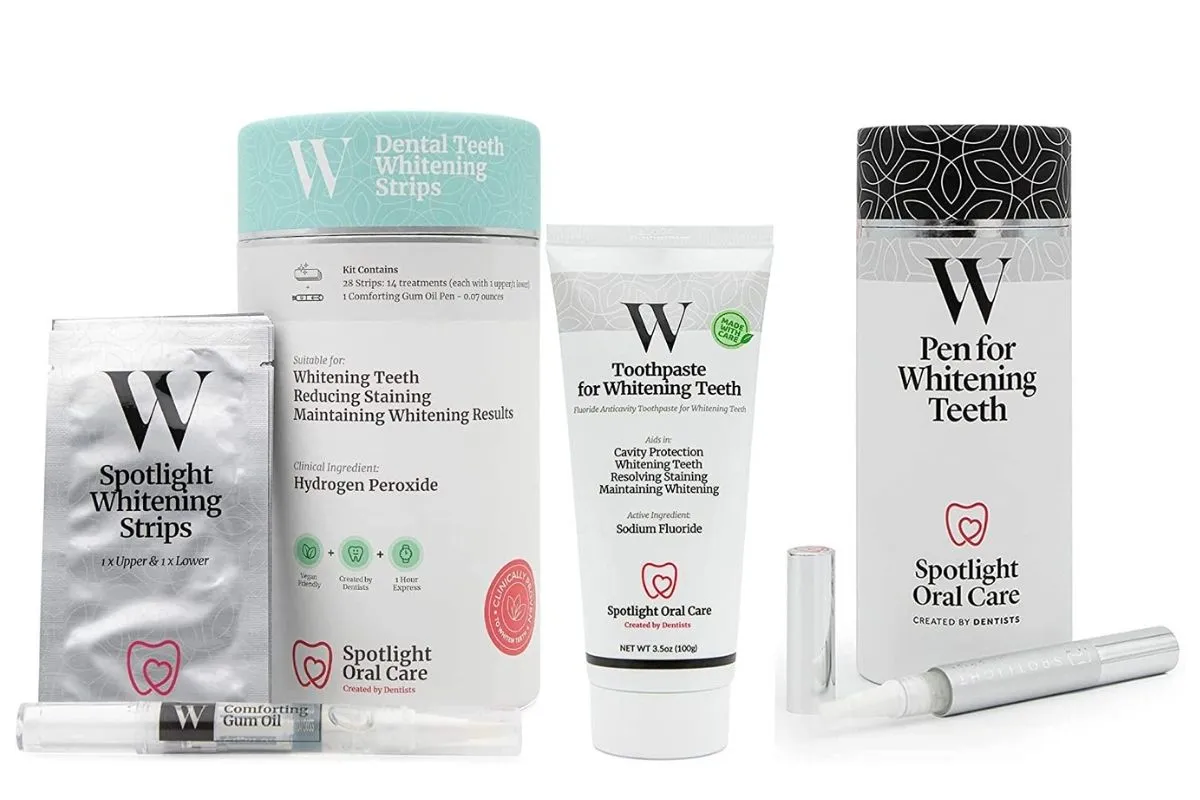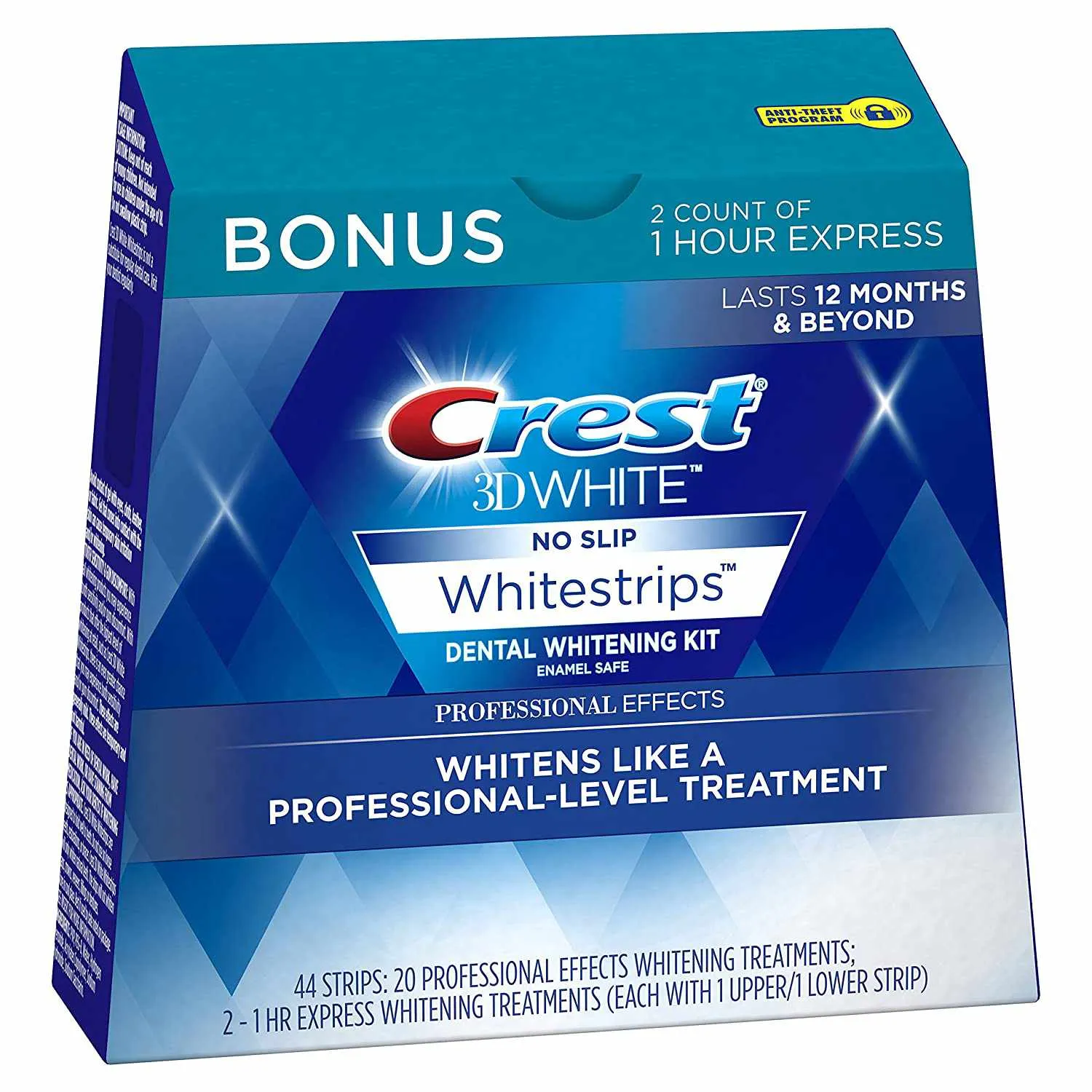What are Teeth Whitening Strips?
Teeth whitening strips are a popular and convenient way to brighten your smile. These thin, flexible strips are coated with a peroxide-based whitening agent, typically hydrogen peroxide or carbamide peroxide. They are designed to be applied directly to the surface of your teeth, adhering to them for a specified amount of time. The active ingredient in the strips penetrates the enamel and dentin, breaking down stains and discoloration caused by factors like coffee, tea, wine, and smoking. The appeal of teeth whitening strips lies in their ease of use, affordability, and the noticeable results they can deliver, often within a matter of days or weeks. They offer a user-friendly alternative to professional whitening treatments, allowing individuals to achieve a whiter smile from the comfort of their own homes. It is crucial to understand the basic functionality and application of these strips to ensure effective and safe use.
How Do Teeth Whitening Strips Work?
The core mechanism behind the effectiveness of teeth whitening strips involves a chemical reaction between the whitening agent and the stained molecules within your teeth. The peroxide penetrates the porous enamel, reaching the discolored areas. This process breaks down the stain molecules into smaller, less noticeable components. The concentration of peroxide determines the speed and intensity of the whitening effect. Strips with higher concentrations may produce quicker results but can also increase the risk of sensitivity. The strips are designed to stay in contact with the teeth for a specific duration, allowing the whitening agent sufficient time to work. The duration and frequency of use are generally outlined in the product instructions and should be adhered to for optimal results and to minimize potential side effects. Understanding this process is vital to setting realistic expectations and using the product safely.
When is the Ideal Time to Use Teeth Whitening Strips?

The optimal time to use teeth whitening strips often depends on your daily routine and personal preferences. However, consistency is key. It’s essential to incorporate the use of strips into a routine that you can adhere to regularly. This ensures that the whitening agent has consistent contact with your teeth, maximizing its effect. Many people find it convenient to apply the strips either in the morning or before bed. This ensures that the strips do not interfere with daily activities such as eating or drinking. Regardless of the time you choose, setting a reminder can help maintain the routine. Regular, consistent use is more effective than sporadic applications, so choosing a time that best suits your lifestyle is crucial to achieve the desired results. This ensures that the whitening process remains uninterrupted and effective.
Morning vs Night Which is Better for Strips?
Deciding between morning and night application involves considering various factors, including your eating and drinking habits. Applying the strips at night can be beneficial, as you are less likely to consume foods or beverages that can stain your teeth during the application period. Additionally, there is no immediate risk of rinsing your mouth immediately after removal, letting the whitening agent work for a more extended period. Conversely, if you prefer to use the strips in the morning, make sure to follow the instructions carefully to avoid interrupting the application process. Ensure you have completed your morning routine before placing the strips, including brushing your teeth. Choose the time that fits seamlessly into your routine to ensure adherence and effectiveness. The key is to select the timing that best suits your lifestyle while considering factors to maximize results and minimize potential disruptions.
After Eating How Long Should You Wait?
It is generally recommended to wait for a period of time after eating before applying teeth whitening strips. This waiting period is primarily to minimize the risk of staining. Certain foods and beverages can temporarily weaken the tooth enamel or leave behind pigments that can stain the teeth. Waiting allows the saliva to neutralize acids and wash away food particles. The specific waiting time can vary based on the product instructions and the type of food or drink consumed. As a general rule, it’s advisable to wait at least 30 minutes to an hour after eating or drinking anything other than water. This precaution ensures that the whitening agent has the best chance to work effectively without interference. Following this guideline contributes to achieving and maintaining a brighter, whiter smile.
After Drinking When Can You Use Strips?

Similar to the guidelines for eating, a waiting period is also suggested after drinking certain beverages before applying teeth whitening strips. Beverages such as coffee, tea, and red wine contain pigments that can stain the teeth and interfere with the whitening process. Waiting allows your saliva to help wash away any staining particles and gives the enamel a chance to regain its natural state. It’s advisable to wait at least 30 minutes after consuming potentially staining drinks. If you frequently consume beverages that stain your teeth, rinsing your mouth with water immediately after drinking can also help minimize staining. This practice can further improve the efficiency of the whitening process. Pay close attention to the product instructions and consider incorporating these simple steps into your routine to support the desired outcomes.
Top 5 Tips to Maximize Effectiveness
Tip 1 Consistent Application
Consistency is a fundamental principle in achieving noticeable results with teeth whitening strips. Adhering to the recommended usage frequency and duration outlined in the product instructions is essential. Skipping applications or using the strips sporadically can significantly reduce the effectiveness of the whitening process. Make the use of strips a routine part of your daily or nightly care. This ensures that the whitening agent has regular contact with your teeth, maximizing the opportunity to break down stains and discoloration. To stay consistent, consider using reminders. Whether it is a phone alarm, a calendar entry, or a note, incorporating reminders will help maintain the routine and keep you on track towards achieving the brighter smile.
Tip 2 Avoid Staining Foods and Drinks

To optimize the results from teeth whitening strips, it’s advisable to limit the consumption of foods and drinks that can stain your teeth. These include coffee, tea, red wine, dark-colored sodas, and highly pigmented foods like berries, curries, and soy sauce. These items contain chromogens, which are color-producing substances that can attach to your tooth enamel and cause discoloration. While it may be challenging to eliminate these items completely, reducing their consumption during the whitening process can significantly boost the effectiveness of the strips. Consider rinsing your mouth with water after consuming these items to minimize staining. Doing so will support the whitening efforts and help maintain the brightness of your smile.
Tip 3 Oral Hygiene
Maintaining excellent oral hygiene is crucial, not only for overall dental health, but also to support the effectiveness of teeth whitening strips. Before applying the strips, brush your teeth gently to remove any surface debris or food particles. Be careful not to brush too vigorously, as this can irritate your gums. Flossing regularly is also critical to remove any particles between your teeth. A clean mouth allows the whitening agent to make direct contact with the tooth enamel, maximizing its effectiveness. Using a mouthwash can further enhance the cleaning process, ensuring that your teeth are as clean as possible before treatment. Good oral hygiene will make the whitening process more efficient and also contribute to overall oral health.
Tip 4 Patience and Consistency
Teeth whitening is a process, and achieving the desired results with strips requires patience and consistency. Results may not be immediately visible, and the timeline can vary depending on the severity of the stains and the concentration of the whitening agent. It is important to follow the product instructions carefully, avoiding the temptation to over-apply or extend the treatment duration, as this could lead to increased sensitivity or other side effects. Give the strips the time needed to work, and be patient with the process. Regularly assess your progress by comparing your smile to a shade guide, but remain consistent with your application schedule. Patience and consistency work hand in hand to help you achieve the desired level of whitening.
Tip 5 Consult Your Dentist

Before beginning any teeth whitening treatment, consulting with your dentist is always a good idea. Your dentist can assess your oral health, evaluate the suitability of teeth whitening strips for your specific case, and provide personalized advice. They can identify any underlying dental issues, such as cavities or gum disease, which may need to be addressed before whitening. Your dentist can also discuss realistic expectations and recommend alternative whitening options if needed. They can also provide advice on potential side effects, like sensitivity, and how to manage them. Consulting a dental professional will ensure that your teeth whitening journey is both safe and effective and can guide you toward achieving the best possible results.
Potential Side Effects and How to Manage Them
While teeth whitening strips are generally safe, potential side effects can occur. One of the most common is tooth sensitivity, which may manifest as a temporary discomfort or sharp pain when consuming hot or cold foods and drinks. Gum irritation is another potential issue, as the whitening agent may come into contact with the gums, leading to redness or inflammation. Carefully following the product instructions can minimize these side effects. If sensitivity occurs, consider using a toothpaste specifically formulated for sensitive teeth or reducing the frequency of applications. For gum irritation, avoid letting the strips come into contact with your gums and consult a dentist if the issue persists. Understanding and being prepared for these potential side effects can help you manage them effectively and ensure a more comfortable and successful whitening experience.
Sensitivity Issues How to Do
If you experience tooth sensitivity while using teeth whitening strips, there are several steps you can take to manage it. One effective approach is to switch to a toothpaste designed for sensitive teeth, which contains ingredients like potassium nitrate that help block pain signals to the nerves. Reduce the frequency of strip applications or the duration of each treatment. This can give your teeth more time to recover between uses. Rinse your mouth with water after removing the strips to remove any remaining whitening agent. Avoid consuming extremely hot or cold foods and drinks, which can exacerbate sensitivity. If the sensitivity persists or worsens, consult your dentist. They may recommend additional treatments or adjustments to your whitening routine to reduce discomfort.
Gum Irritation How to Prevent It

Gum irritation is another potential side effect of teeth whitening strips, but there are steps you can take to prevent it. Ensure you apply the strips carefully, avoiding contact with your gums. If the strips overlap your gums, trim them with scissors to fit your teeth more accurately. Do not brush your teeth immediately before applying the strips. This can cause minor abrasions that increase the risk of gum irritation. If irritation occurs, stop using the strips for a few days to allow your gums to heal. Rinse your mouth with water or a saltwater solution to soothe the affected area. If the irritation is severe or persists, consult your dentist, who may recommend alternative products or methods to minimize the impact on your gums.
The Importance of Following Instructions
Adhering to the instructions provided with your teeth whitening strips is crucial for both safety and effectiveness. These instructions are designed to maximize the whitening results while minimizing potential side effects. The manufacturer specifies the recommended application time, frequency, and duration. Following these guidelines ensures that you are not overexposing your teeth to the whitening agent. Improper use can lead to increased sensitivity, gum irritation, or less than optimal whitening. Taking the time to read and understand the instructions can also prevent potential misuse. If you have any questions or uncertainties, consult your dentist for clarification. Following the product instructions carefully will ensure you use the strips safely and effectively.
Conclusion Achieving Your Whitening Goals
Using teeth whitening strips effectively involves more than just applying them at any random time. Choosing the right time, ensuring consistency, and taking necessary precautions are key to achieving a brighter, whiter smile. Understanding when to use the strips, how to handle your oral health before and after treatment, and how to manage any side effects will help you maximize the benefits. Consult your dentist before starting any teeth whitening treatment. By following these guidelines, you can confidently navigate the teeth whitening process and unlock the full potential of teeth whitening strips, achieving the radiant smile you desire. A brighter smile not only boosts your confidence but also contributes to your overall well-being.
